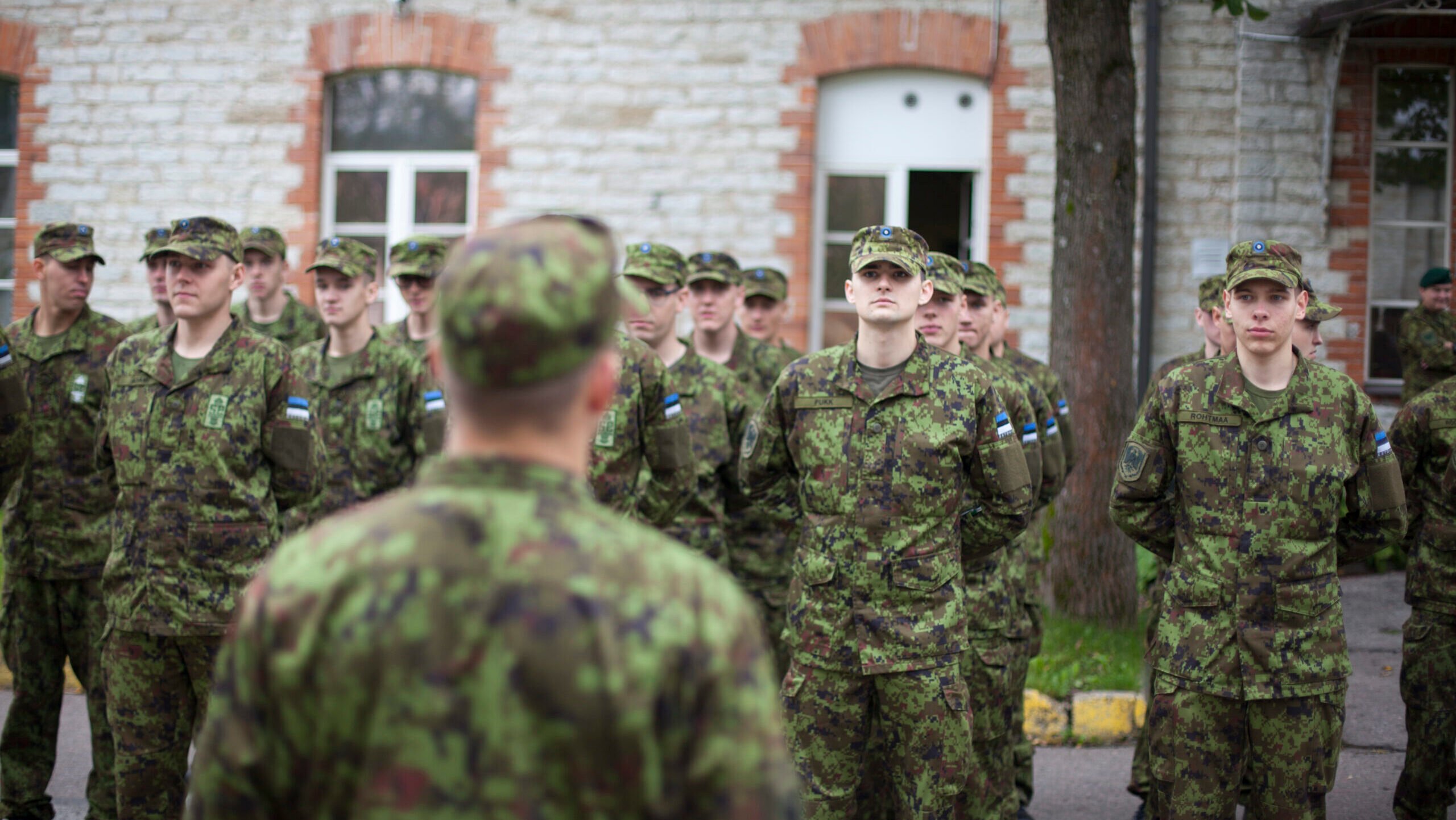Estonia ‘seriously’ discussing sending troops to ‘rear’ jobs in Ukraine: Official

Estonian conscripts wait in formation following their graduation ceremony from Staabi- ja sidepataljon, Signal Battalion, in Tallinn, Estonia, Sept. 5, 2016. (U.S. Army photo by Spc. Rachel Diehm/Released)
[UPDATED 5/14/24 at 2:30 pm ET to include comments from Estonia’s defense minister, following a previous update with additional context from national security advisor Roll.]
TALLINN — The government of Estonia is “seriously” discussing the possibility of sending troops into western Ukraine to take over non-direct combat, “rear” roles from Ukrainian forces in order to free them up to fight on the front, though no decision is imminent, Tallinn’s national security advisor to the president told Breaking Defense.
Madis Roll said the executive branch is currently undertaking an analysis of the potential move, and though he said Estonia would prefer to make any such move as part of a full NATO mission — “to show broader combined strength and determination” — he didn’t rule out Estonia acting in a smaller coalition.
“Discussions are ongoing,” he said on May 10 at the presidential palace here. “We should be looking at all the possibilities. We shouldn’t have our minds restricted as to what we can do.” He also emphasized that it’s “not unthinkable” that NATO nations opposed to such a move would change their minds “as time goes on.”
RELATED: Three reasons Russia dismissed Sergei Shoigu, its longtime defense minister
Following publication of this report, Madis clarified that such a decision is not pending before the Estonian prime minister or her cabinet specifically, and he meant only that the discussion “is not dead” and is “ongoing in Estonia in general.” “We have not excluded any option in the future,” he said.
Estonian Defense Minister Hanno Pevkur on May 14 told the European news outlet ERR such talks haven’t “gone anywhere” in Tallin.
“There is nothing new here. When France came up with the idea of considering whether Europe and the allies could do more, it has been floated in various discussions, but it has not gone anywhere, because at the moment there is no clear understanding among the allies of what it adds,” Pevkur told ERR. “There is certainly no initiative by Estonia and certainly Estonia alone is not going to do anything.”
Roll’s boss, Estonian President Alar Karis, holds a position with many ceremonial duties relative to the nation’s prime minister, Kaja Kallas, but he is ultimately Estonia’s commander-in-chief and is a key figure in foreign policy.
RELATED: Estonian volunteers fighting in Ukraine are helping prepare Tallinn’s rapid response force
Roll’s comments came after the head of Estonia’s defense forces, Gen. Martin Herem, told Breaking Defense earlier last week there had been discussions in the military months ago about sending troops to western Ukraine to take on jobs like medical services, logistics or air defense for some western cities, but the air had gone out of those talks after the idea became a public lightning rod.
Herem and Pevkur were referring to the outcry that followed French President Emmanuel Macron’s declaration that Western nations must be open to discussing sending their troops in to aid Ukraine. (Kallas, the Estonian PM, in March appeared to defend Macron’s statement, noting that he wasn’t talking specifically about sending ground troops into combat. “In the exact same way, I can assure you that our soldiers will not go there to fight,” she said.)
Also earlier last week a key Estonian lawmaker, Foreign Affairs Committee Chair Marko Mihkelson, told Breaking Defense that European nations “have to start thinking about a coalition of the willing” to more directly help Kyiv, potentially with direct combat forces. (The Estonian officials spoke last week to an audience from the Kaplan Public Service Foundation; Breaking Defense accepted accommodation in Estonia from KPSF.)
The willingness of different nations to send some forces into Ukraine is a potential dividing line inside NATO. Although each member of the alliance is free to send forces where it feels it must for its national interests, some nations have been clear they see more risk than reward in doing so.
Notably, Germany and the US have flatly rejected the idea of sending in troops. The US Ambassador to Estonia, George Kent, pointed Breaking Defense to the Biden administration’s policy of aiding Ukraine through significant aid packages, but a firm commitment not to send in American soldiers.
Asked May 9 in Washington how Russia could react to NATO-nation forces being in Ukraine, British Chief of Defense Adm. Sir Tony Radakin was evasive, saying, “I won’t go into too much commentary on your question, if you don’t mind … The UK position is very clear in terms of, that’s not a path that the Prime Minister wants to go down.
However, he emphasized that the UK position is not “being governed by how Russia will react.” Instead, he said, it is based around what the UK views as the best approach overall: “I think that what you’ve seen all the way through, is a UK that has done the right thing, based on its judgment of what’s needed to be done.”
In contrast, there is Macron’s statement, as well as Lithuanian prime minister Ingrida Šimonytė who recently told the Financial Times she was open to sending Lithuanian troops into Ukraine to train Kyiv’s forces there. The FT wrote that Šimonytė predicted Russia could see the move as an escalation, but added, “If we just thought about the Russian response, then we could not send anything. Every second week you hear that somebody will be nuked.”
Šimonytė added that to this point, Ukraine has not requested its troops.
Aaron Mehta in Washington contributed to this report.